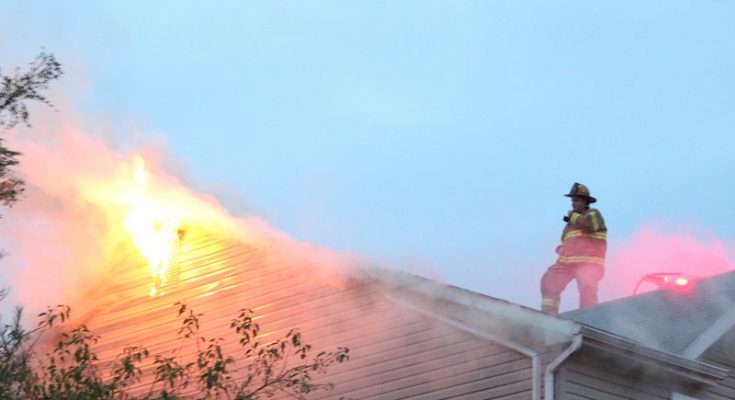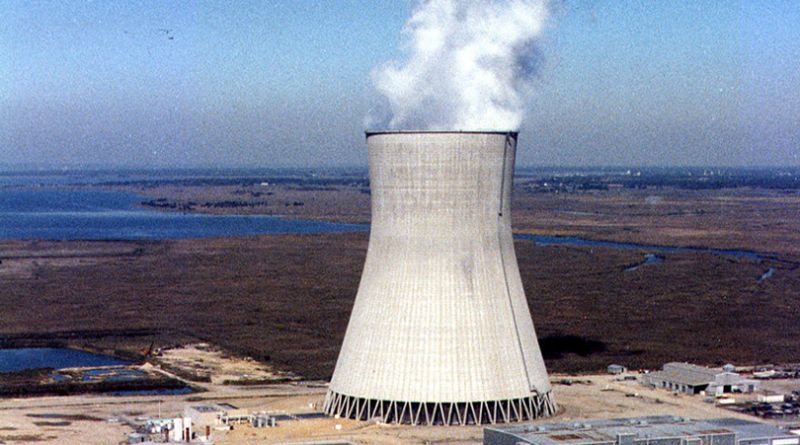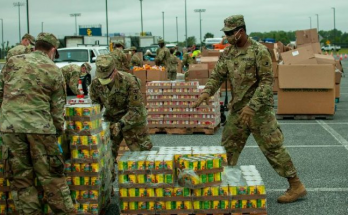The Volunteer Fire Service Recruitment and Retention Task Force was created by the 150th General Assembly in House Concurrent Resolution No. 50. In authorizing the Task Force, the General Assembly recognized that the State of Delaware has an obligation to its citizens to deliver public safety. To that end, the purpose of the Task Force is to study and to make recommendations for the improvement of the recruiting and the retention of Volunteer Firefighters in the State of Delaware.
The members of the Task Force performed their duties over the course of 5 meetings. The members worked diligently, in good faith, and with the goal of finding a solution to the crisis that threatens the delivery of fire protection throughout the State.
In the pages that follow, the findings and recommendations of the Task Force are set forth and its proceedings are described. The Task Force Chair and Co-Chair want to recognize and thank Norman “Jay” Jones, Jr, President of the Delaware Volunteer Firefighters Association, for his invaluable assistance and support.
It will be the responsibility of our elected officials, in partnership with the Delaware Fire Service, to respond to the challenges that currently affect the system.
Executive Summary
The spirit of the volunteer firefighter has been woven into the fabric of our country since before the Declaration of Independence. The first formally organized all-volunteer fire company in the colonies was started on December 7, 1736, in the City of Philadelphia, by Benjamin Franklin.
The first volunteer fire company in Delaware was the Friendship Fire Company in the City of Wilmington. It was organized on December 22, 1775 with two hand engines which came from a French frigate lying in the Delaware River off of New Castle. The War of Independence stopped activities in the fire company as many members enlisted and fought for the Independence of the Unites States. It was not until after the war that the activities were resumed.
The tradition and service of volunteer firefighters go back all throughout the history of our country and the State of Delaware. The longest continuously operated volunteer fire department in Delaware is the Lewes Fire Department, which was organized in 1796.
The Volunteer Firefighter provides Fire, Rescue and EMS services to most of the communities in Delaware with the exception being the City of Wilmington, where there is a fully paid fire department. The Volunteer Firefighter devotes a large portion of his and her time and makes personal sacrifices to the people of Delaware. While technology, equipment and training have changed over the years, it still takes boots on the ground and firefighters wearing them to handle emergency calls, which have tripled in the last 30 years.
According to a 2017 report by the National Fire Protection Association (NFPA), there were 682,600 volunteer firefighters in the United States in 2017. That is the lowest recorded level since the NFPA began its survey in 1983. The decline in the number of volunteer firefighters has been going on nationally and locally for many years. To get a barometer of this in Delaware, one can look at the Basic Firefighting Skill Class taught at the Delaware State Fire School— this course is the very first training a firefighter receives. According to the State Fire School, they instructed 408 new firefighters in 2009. Ten years later, in 2019, the fire school taught only 189.
Today, newer generations of fire service families are no longer following the traditions of their families by joining the fire service. Societal changes have unfortunately transitioned to a place where there is little volunteerism for our fire and EMS service. For a number of years, volunteer fire departments have been attempting to maintain the same level and quality of service with fewer and fewer volunteers. Some of these efforts have resulted in the initiation of full and parttime employees to staff the fire apparatus and/or to dispatch multiple fire departments to initial fire alarms.
States like Delaware must implement policies and programs to ensure the continuation of the volunteer fire service. Providing educational opportunities through state financial assistance has been a successful method of recruitment and retention for law enforcement and the Delaware National Guard. Students in Delaware who maintain certain grade point averages and virtuous conduct are eligible for the SEED program and the INSPIRE program. These programs assist both graduate and undergraduate students in securing their future careers. Currently, there is legislation introduced to extend SEED benefits to Delawareans age 25 and older and further, to 5 increase the number of continuous semesters for eligible participants from 6 to 10 (SB 12). Likewise, legislation is progressing to enhance the INSPIRE program to full, in-state tuition assistance with an annual increase of $3,438 per student (SB 95).
These are not the only programs that exist. Governor Carney has already included $1 Million in proposed FY22 budget recommendations for the Career Pathways program at the Delaware Technical and Community College. Legislation has been filed to establish the Elevate Delaware Program (HS 1 for HB 166), providing up to $10,000 in tuition assistance for Delaware residents who have obtained a high school diploma or a GED, and who have enrolled in an approved nondegree credit certificate program. This program also allows the Department of Labor to provide payments to participants to cover living expenses while attending the training program and for a 90-day job search period upon completion of the training program.
The waning participation of volunteers in the fire service is a problem that will also require new, creative solutions. One example to indirectly address this issue would be the investment in home fire sprinkler systems, a component of the International Building Code. According to the NFPA, every year more than 2300 people perish due to fires in the home. Fires in single and two-family homes cause $6.1 billion in property loss. Home fire sprinkler systems deliver eight to ten times less water while more efficiently extinguishing the fire compared to the use of a firefighter hose stream. This reduces the required staffing, property damage, and fatalities of residents and firefighters.
State Auditor Kathleen McGuinness’ 2020 annual Delaware Volunteer Fire Service Report stated that our brave volunteer firefighters, fire police, EMT’s, Ladies Auxiliary, and other support personnel saved Delaware taxpayers more than $244 Million in Fiscal Year 2020. The State Auditor recommended that lawmakers create another fund, independent of Grant-in-Aid, to extend the longevity of the volunteer fire service. Most volunteer fire departments only receive a 12% response in their fund drive campaigns. Many Delawareans believe that our fire departments are fully funded by the government and that there is no need for contributions. If the volunteer fire service were to be dissolved due to lack of volunteers, cost to the taxpayers is not the only consideration we must address. The volunteer fire service is the baseline for people in public safety. There are 1534 Emergency Medical Technicians (EMT) in Delaware. Most of them work either full-time or part-time in this State and the overwhelming majority of them started in the Volunteer Fire Service. There are 325 Paramedics serving in Delaware’s EMS system. A large number of them also started in the Volunteer Fire System. Currently the three paramedic directors, one in each county, also started in the Delaware Volunteer Fire Service. The Director of Sussex County EMS is the President of a Volunteer Fire Company.
The State Fire Marshal and most of his staff are still members of the Delaware Volunteer Fire Companies or started their careers in those companies. The Director of the Delaware State Fire School, most of his full-time staff, and his 152 part-time instructors started or are still active in the Volunteer Fire Service. The 911 communication centers are staffed by people who are volunteer firefighters. The Director of DEMA is a Volunteer Fire Chief. In the City of Wilmington, a large number of the firefighters came from the ranks of the volunteer fire companies. The current Deputy Chief of Operations in Wilmington started his career in the Volunteer Fire 6 Service. There are volunteer firefighters who are municipal police officers and Delaware State Troopers.
Volunteer Firefighters and EMTs are just part of the membership of a typical volunteer fire company. There are Associate Members who do administrative, fund raising, community liaison, fire prevention and life safety work. Additionally, there are auxiliary members who do fund raising, a significant contribution to the mission of the fire company. There are hundreds of these ancillary members who contribute to the success of volunteer fire companies.
The connection between public safety employees and the volunteer fire service is very prominent. All together there are several thousand career jobs in public safety which are directly related to the volunteer fire service. Any reduction to this pool of people from the volunteer system could result in a shortage in public safety employees.
Lastly, we must keep in mind the community connection aspect of the service. In the early volunteer fire service, the fire house was the hub of the community. While it may not be as prevalent today, it still plays a vital role. The firefighters and associate members are active in the community holding fire prevention events, teaching home safety classes, or checking and replacing smoke detectors. When the volunteer lives in the same community, they know Mrs. Smith, a clerk at the local hardware store. Community members look forward to the craft shows or chicken dinners led by the Auxiliary at the fire house. The more the community comes to the fire house, the more interaction there is with the community. As paid staff from outside the community are brought on to lead these operations, the community connection is lost. This connection is very important to the success and safety of the community.
Volunteer firefighters are unique individuals who enjoy an unparalleled brother and sister hood relationship. They make a difference in people’s lives every day. There is a certain kindred spirit that is imbedded and thrives in the men and women who are volunteer firefighters. A spirit that encompasses Tradition, Pride, Dedication, and Service. A spirit we should not want to lose.
Findings
Based on the information presented and the testimony given, the Task Force presents the following findings.
1. There is a shortage of volunteer firefighters in the State of Delaware.
2. The Volunteer Fire Services’ First Responders are the first line of defense to emergencies in our communities.
3. The problems the Volunteer Fire Service is facing are significant and require action from the Delaware General Assembly.
4. Sufficient staffing must be established and stabilized to ensure that the quality of service provided by the Volunteer Fire Service is maintained.
5. There should be an individual in the State focused on the recruitment and retention of Fire Service volunteers.
6. Residential home fire sprinklers reduce property damage and fatalities and fewer firefighters are required when extinguishing fires in buildings where they have been implemented.
7. The current state tax credit does not come close to the uncompensated personal costs and sacrifices that volunteer firefighters incur, including gas, depreciation on their personal vehicle, clothing, and healthcare.
8. Tuition reimbursement programs for undergraduate and graduate students have been successful recruitment tools for law enforcement and the National Guard.
These findings provided the basis for the Task Force’s recommendations. They are an indication that the Volunteer Fire Service needs help now.
Recommendations
The following is a ten-part plan presented by the Delaware General Assembly’s Volunteer Firefighter Recruitment and Retention Task Force. A wall cannot be constructed from a single brick. Likewise, each of these recommendations contributes collectively to an environment that promotes the recruitment and retention of volunteers for Delaware’s fire service.
1. Recruitment and Retention Training Class: The Delaware State Fire School should develop a class on recruitment and retention. Discussions on recruitment should focus on all aspects of the hiring process from marketing and first contact to the firefighter’s induction. The retention portion of the course should focus on mentoring, monitoring, and communication at a minimum. This class should be presented to the volunteer fire companies’ administrators, membership committees, and recruiters. While recruiting is deemed by most experts to be a local issue, the strategies, presentations, and best practices are universal. A successful statewide recruitment and retention program would depend on the fire service leaders learning, adapting to, and understanding what works and how it is delivered.
2. AmeriCorps Program: An AmeriCorps Program should be established through the DHSS Volunteerism Office. The program would consist of full time AmeriCorps members assigned to each county. They would be assigned to companies based on call volume and geographic considerations. Each County Government (New Castle, Kent, and Sussex) would cover the 24% match of the stipend for each AmeriCorps member in their county. The volunteer fire companies do not have the members needed to run a successful recruitment program. By using the AmeriCorps Program, it would give the fire companies someone to deliver the program on a regular basis. It could also lead to other community involved programs. In order for a recruitment program to be successful it must be a continual, on-going program.
3. DSFS Training Administrator: The State of Delaware should add an extra training administrator to the Delaware State Fire School who would manage the AmeriCorps Programs and be responsible for recruiting in the State. No program can be successful without someone to manage it. DHSS could acquire AmeriCorps members but cannot manage the program. It should be a fire service entity who understands the fire service and its intricacies. Since the AmeriCorps members would need some fire service training, the fire school would be an ideal 9 location for the program manager. The program manager would also become a part of the DVFA Recruitment and Retention Committee.
4. GEM’s Program: The Sussex County GEM’s Program should be promoted in all public school districts through the Department of Education. The GEM’s Program focuses on kids 10-15 years of age. It involves an annual assembly program and an after-school program. The AmeriCorps members, under the direction of its manager, would organize and manage the GEM’s program in each County. The Sussex County GEM’s program had been a successful grassroots program primarily in the Indian River School District for the last several years until the COVID-19 pandemic halted the program. With the guidance of the Sussex County fire service leaders, who originated the program, and under the direction of their manager at the Fire School, the AmeriCorps members would help grow the GEM’s program throughout the state. The growth of this program would encourage more students to not only join the Volunteer Fire Service, but to pursue careers in public safety as well.
5. Internet Website and Marketing: The Delaware Volunteer Firefighters Association should pay for and administer the recruitment website and marketing promotions through its Partner’s Program. The recruitment website, firefighter.delaware.gov, should be maintained as the go-to website for volunteer firefighter recruiting. The leads developed through the DVFA recruitment website would be forwarded to Fire School Program Manager and the DVFA Recruitment Chair. The Fire School Program Manager would work with the DVFA on upgrades to the website.
6. City of Wilmington: The City of Wilmington has the only fully career fire department in the state. The City, State Legislators, City Council and County Council Members should be encouraged to promote, to the City of Wilmington’s youth, the advantages of joining the New Castle County Volunteer Fire Companies for firsthand knowledge of public safety fields. This would include promotion of the GEM’s program. The City of Wilmington has untapped resources of youth in their city who could become volunteer firefighters. Introducing the GEM’s program into schools in cooperation with the City of Wilmington Fire Department and moving city youth, when they are of age, into the surrounding volunteer fire companies would increase participation in the fire service. There has a successful history of involving city youth 10 in the Elsmere Fire Company, where city youth have joined, matured, and moved into other public safety careers.
7. Vocational Education: Delaware Vocational High Schools should offer public safety classes like Firefighting, EMT and EMR, etc. in their CTE Programs. CTE Programs have proven to be successful throughout our educational system in the United States. They should be expanded to include other public safety fields including Firefighting and EMS. Not only will this increase the interest in Firefighting and EMS, but also has the potential to add more youth to the volunteer firefighter rolls. In turn, this could lead to careers for our youth. According to research from the Association for Supervision and Curriculum Development (ASCD), 93 percent of high school students in CTE programs graduate on time, significantly higher than the national rate of 84.6 percent. What’s more, ASCD research indicates 81 percent of high school dropouts “reported that relevant, real-world learning opportunities would have kept them in high school.”
8. College Credits: Classes taught at the Delaware State Fire School should qualify for college credits. The Delaware State Fire School is a National Pro Board-Certified Academy as well as a National Registry EMT educational facility. All Pro Board and National Registry curriculums involve pass/fail testing to complete the course. It would benefit the students to have these classes qualify for college credits.
9. Tuition Reimbursement: Tuition Reimbursement should be offered to undergraduate and graduate students attending a University or College in the State of Delaware, similar to the programs for law enforcement and the National Guard. Tuition reimbursement has been a successful tool for the recruitment and retention of law enforcement officers and members of the National Guard. Requirements for the program should be developed and administered by a Council, appointed under the State Fire Commission. This is similar to how the law enforcement program is managed by the Criminal Justice Council. Volunteer firefighters should be required to maintain a certain number of hours to quality. Once approval is given by the council, the State Fire Commission would submit the reimbursement.
10. Tax Deduction: The State of Delaware Income Tax Credit should be increased to $1,000.00 for volunteer fire company members who donate a universal 100 hours of service to the fire company per year. The 151st General Assembly’s SCR 26 put the cost of volunteerism at $27.20 per hour.
The costs a volunteer firefighter incurs can be considerable. These costs are not just monetary loses for fuel, depreciation on their personal vehicle, and ruined clothing. They are also physical, psychological, and emotional: the strains, pains, cuts, and bruises; the traumatic injuries and deaths a volunteer firefighter sees, sometimes leading to PTSD; the missed Sunday dinners, soccer games, and recitals. The expectations we place on our volunteer firefighters are significant and the service they render is invaluable.
Source: Volunteer Firefighter Recruitment and Retention Task Force




